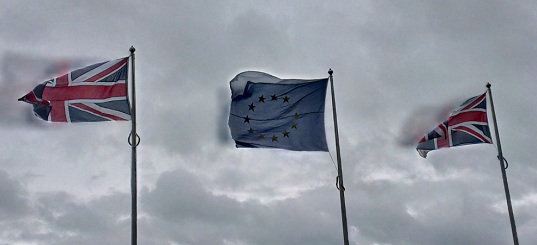Overloading the EU juggernaut – how far can enlargement go?

Never mind Romania and Bulgaria, the real problems come down the line
When Charles de Gaulle spoke of a Europe from the Atlantic to the Urals, he was promoting an alternative vision of the continent to the ‘ever closer union’ of the EEC: one which spanned economic systems and didn’t impinge on national interests as the EEC did (and which in his mind was incompatible with France’s position as a great power).
At the time, the EEC had only six members and barely stretched east of the Elbe, never mind to the Urals. Fast forward half a century and the picture is very different. With the exception of the Western Balkans, Switzerland and Norway, the EU now covers virtually the entire continent west of the former Soviet Union, with all that means for freedom of movement and immigration. Already, the final accession restrictions coming off the two countries that joined in 2007 – as they will on Wednesday – has sparked renewed debate in the UK about a potential influx of economic migrants. That, however, would be as nothing compared with the two giants lurking in the wings.
The first of these is Turkey, whose relationship with the EU has moved forward at a glacial pace since it became an associate member in 1963, applied for full membership in 1987 and began accession negotiations in 2004. The very slowness of that progress is testament to the schizophrenia within the EU about its view of Turkey. On the one hand, it’s a member of NATO, a secular, democratic state that’s growing and industrialising; on the other, it has an overwhelmingly muslim population and it’s questionable as to whether it’s either geographically or culturally of Europe. It’s also very populous and (at least to Western Europe), very poor.
The other is the Ukraine, which like Turkey, is also pulled in two directions, something very visibly demonstrated in the ongoing protests. It might be wrong to categorise those directions as Moscow and Brussels; Moscow and anti-Moscow might be more accurate but with the EU as the only realistic alternative, the two amount to much the same for practical purposes. Even so, while it’s not yet a formal applicant for membership, it may well be if the current protests end up with the opposition coming out on top. As much as anything, that process comes down to how the Ukraine views itself (or how it resolves different views of itself, as well as bridging divides between the east and west of the country and between cities and countryside).
All of which gives EU leaders, and particularly those in the west of the continent, something of a headache as it brings all sorts of difficulties in both foreign and domestic policy. Struggling against the after-effects of recession, high unemployment, falling or stagnant living standards and political protest, neither voters nor politicians are likely to welcome the prospect of 120 million new EU citizens from low-wage countries. They might be a bit concerned about what it might mean for the future of the Eurozone too.
On the other hand, geopolitics means that the leaders at least have to leave the door open in principle. To not do so would be a rejection that would push both buffer states towards their alternative poles of attraction – the Middle East and Moscow, respectively – a result that could have major consequences for the future and which would seem particularly wasteful given their aspirations.
So they can’t say yes and they can’t say no. For the time being, they can continue to play for time while political instability and national policies in the countries rule membership out for the time being – but that’s not a stable long-term solution. It might all sound like a hypothetical question but it actually goes to the heart of the entire EU project: what is it for, who is it for and at what point do they pull up the drawbridge to avoid overloading the applecart?
A Europe from the Atlantic to the Urals? De Gaulle’s vision was meant to be in competition with the EEC’s; instead, it’s close to policy. Yet as much as the actual or potential applications of Turkey and the Ukraine reflect their own self-image, the real determining factor will be the self-image of the EU itself.